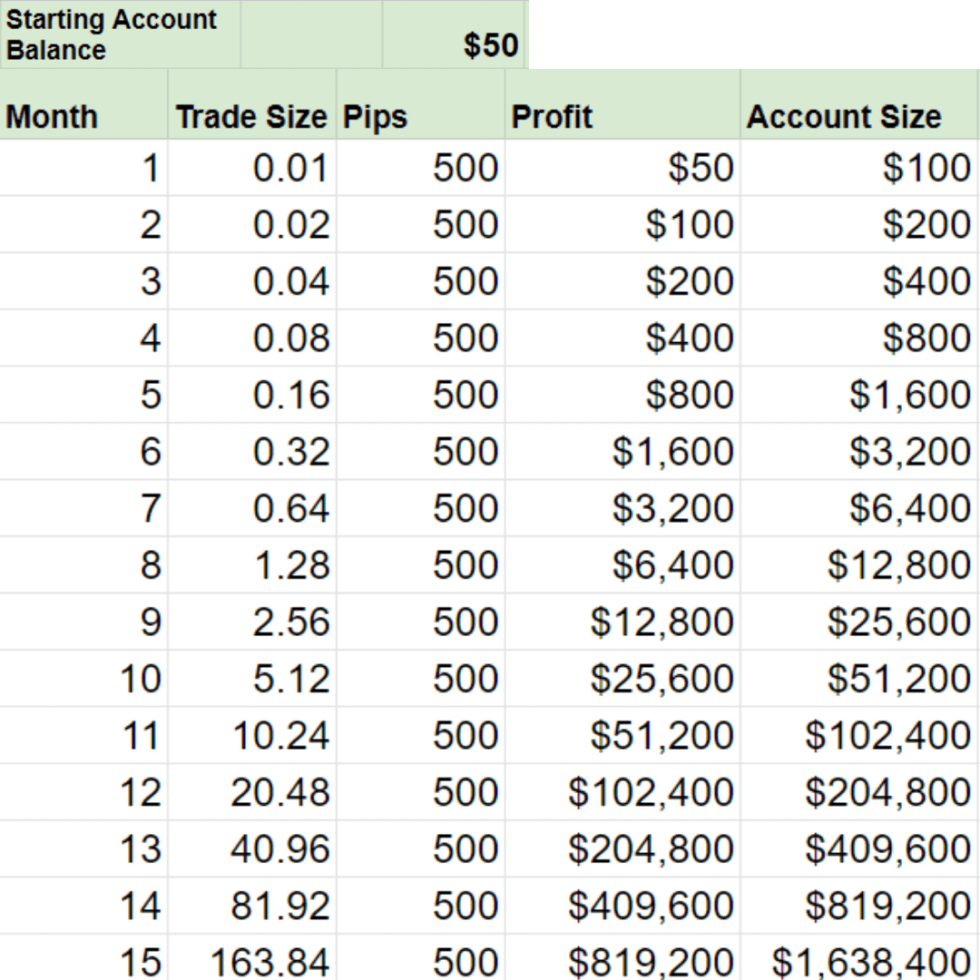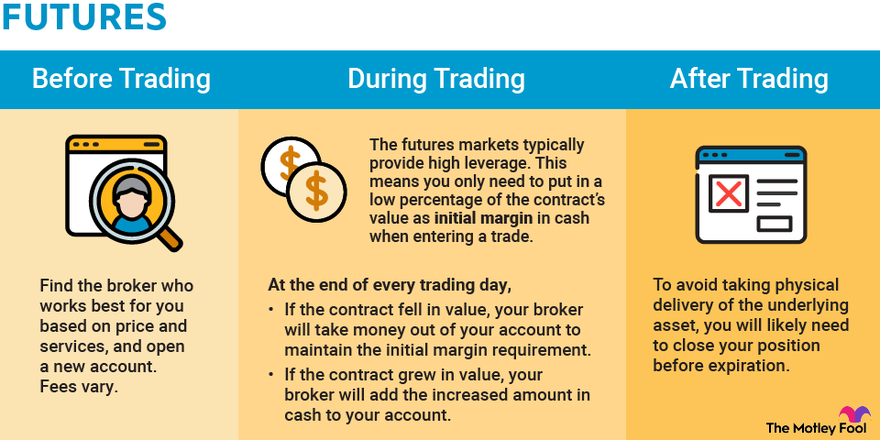
- Understanding Crypto Buy Signals
- Technical Analysis Signals
- Fundamental Analysis Signals
- Market Sentiment Signals
- Strategies for Using Buy Signals
- The Importance of Due Diligence
- Crypto Buy Signals in Different Market Conditions
- The Future of Crypto Buy Signals
- Final Conclusion
- Commonly Asked Questions
Crypto buy signals, the whispers of the market, can guide you toward profitable investments. They’re like flashing lights on a stock ticker, but understanding them requires more than just a quick glance. Whether you’re a seasoned trader or a curious newcomer, navigating the world of crypto buy signals requires a blend of technical analysis, fundamental understanding, and a healthy dose of market awareness.
These signals can come from various sources, from technical indicators that chart price movements to fundamental analysis that digs into the underlying technology and adoption of a cryptocurrency. However, it’s crucial to remember that buy signals are not foolproof guarantees. They are tools, not prophecies, and should be interpreted within the broader context of the market and your own investment goals.
Understanding Crypto Buy Signals
Cryptocurrency markets are volatile and unpredictable, making it challenging for investors to time their entries and exits effectively. Buy signals can be valuable tools for navigating these markets, providing insights into potential opportunities to buy cryptocurrencies.
Types of Buy Signals
Buy signals are indicators that suggest a favorable moment to purchase a cryptocurrency. These signals can be derived from various sources, including technical analysis, fundamental analysis, and market sentiment.
Technical Indicators
Technical analysis involves studying price charts and historical data to identify patterns and trends that can predict future price movements. Some common technical indicators used as buy signals include:
- Moving Averages: Moving averages smooth out price fluctuations, creating trendlines that can indicate support and resistance levels. A crossover of a short-term moving average above a long-term moving average can be a bullish signal.
- Relative Strength Index (RSI): The RSI measures the magnitude of recent price changes to evaluate overbought or oversold conditions. A reading below 30 can indicate an oversold condition, suggesting a potential buying opportunity.
- MACD (Moving Average Convergence Divergence): The MACD compares two moving averages to identify momentum changes. A bullish crossover occurs when the MACD line crosses above the signal line, indicating a potential buy signal.
Fundamental Analysis
Fundamental analysis focuses on evaluating the underlying value of a cryptocurrency, considering factors such as its technology, team, community, and market adoption. Positive developments in these areas can suggest a strong fundamental case for buying a cryptocurrency.
- New Partnerships or Integrations: Partnerships with reputable companies or integration into existing ecosystems can increase the utility and adoption of a cryptocurrency, potentially driving its price upwards.
- Product Releases or Upgrades: Significant product releases or upgrades that enhance the functionality or security of a cryptocurrency can attract new users and investors, boosting demand and price.
- Positive Regulatory Developments: Favorable regulatory frameworks or announcements can create a more stable and attractive environment for cryptocurrency investments, potentially leading to price increases.
Market Sentiment
Market sentiment reflects the overall attitude of investors towards a cryptocurrency. Positive sentiment, often driven by news events or social media buzz, can increase demand and push prices higher.
- Social Media Trends: Increased mentions, positive discussions, and growing community engagement on social media platforms can indicate rising investor interest and potential buying pressure.
- News Coverage: Positive news coverage and favorable analyst reports can boost market sentiment and attract new investors, driving up demand.
- Whale Activity: Large-scale purchases or investments by institutional investors or “whales” can signal confidence in a cryptocurrency and potentially influence its price direction.
Understanding the Context of Buy Signals
It is crucial to understand the context of buy signals and their limitations. Buy signals are not foolproof predictions, and they should be used in conjunction with other forms of analysis and risk management strategies.
Buy signals should be interpreted within the broader market context, considering factors such as the overall market trend, volatility, and regulatory environment.
Technical Analysis Signals

Technical analysis is a method of forecasting future price movements of an asset by studying past price and trading volume data. It relies on the assumption that market history tends to repeat itself, allowing traders to identify patterns and trends that may provide insights into future price movements. Technical analysis utilizes various indicators and tools to identify potential buy signals.
Moving Averages
Moving averages are a popular technical indicator used to smooth out price fluctuations and identify trends. They are calculated by averaging the closing prices of an asset over a specific period.
- Simple Moving Average (SMA): This is the most basic type of moving average, calculated by adding up the closing prices of an asset over a specified period and dividing by the number of periods. For example, a 20-day SMA would average the closing prices of the last 20 days.
- Exponential Moving Average (EMA): This type of moving average gives more weight to recent prices, making it more responsive to changes in price. It is calculated by applying a smoothing factor to the SMA, which gives more weight to recent prices.
A common strategy is to use a combination of two moving averages, such as a 50-day and 200-day SMA. A buy signal is generated when the shorter-term moving average (e.g., 50-day) crosses above the longer-term moving average (e.g., 200-day). This suggests that the price is gaining momentum and moving in an upward trend.
MACD
The Moving Average Convergence Divergence (MACD) is a momentum indicator that measures the relationship between two moving averages. It is calculated by subtracting the 26-day EMA from the 12-day EMA. The MACD line is then plotted on a chart, along with a signal line, which is a 9-day EMA of the MACD line.
- Buy Signal: A buy signal is generated when the MACD line crosses above the signal line, indicating a bullish momentum.
- Sell Signal: A sell signal is generated when the MACD line crosses below the signal line, indicating a bearish momentum.
RSI
The Relative Strength Index (RSI) is a momentum oscillator that measures the magnitude of recent price changes to evaluate overbought or oversold conditions in the market. It is calculated based on the ratio of upward price changes to downward price changes over a specific period.
- Overbought: An RSI value above 70 is considered overbought, suggesting that the price is likely to decline.
- Oversold: An RSI value below 30 is considered oversold, suggesting that the price is likely to rise.
A buy signal can be generated when the RSI falls below 30 and then rebounds, indicating a potential oversold condition.
Bollinger Bands
Bollinger Bands are a volatility indicator that plots two standard deviation bands around a moving average. They are used to identify overbought and oversold conditions, as well as potential price reversals.
- Buy Signal: A buy signal is generated when the price falls below the lower Bollinger Band, indicating a potential oversold condition.
- Sell Signal: A sell signal is generated when the price rises above the upper Bollinger Band, indicating a potential overbought condition.
Bollinger Bands can be used to identify potential buy opportunities when the price falls below the lower band and then bounces back. This suggests that the price is likely to move higher.
Fundamental Analysis Signals
Fundamental analysis is a crucial aspect of cryptocurrency investing, as it examines the underlying factors that drive asset prices. Unlike technical analysis, which focuses on price charts and patterns, fundamental analysis delves into the intrinsic value of a cryptocurrency, considering its technology, adoption, and market dynamics. By understanding these fundamental factors, investors can identify potential buy signals and make informed investment decisions.
Adoption Rates
Adoption rates play a significant role in determining the value of a cryptocurrency. As more people and businesses adopt a cryptocurrency, its demand increases, potentially driving up its price. To analyze adoption rates, investors can consider the following factors:
- Number of users: The number of active users on a cryptocurrency network is a key indicator of adoption. A growing user base suggests increasing demand and potential for price appreciation.
- Transaction volume: The volume of transactions on a blockchain network reflects the level of activity and usage. Higher transaction volume indicates greater adoption and potentially stronger price support.
- Merchant adoption: The number of merchants accepting a cryptocurrency as a form of payment is another crucial indicator of adoption. Wider merchant adoption signifies increased utility and potential for price growth.
For example, the increasing adoption of Bitcoin by major corporations, such as Tesla and MicroStrategy, has contributed to its price appreciation in recent years.
Regulatory Changes
Regulatory changes can have a profound impact on cryptocurrency prices. Positive regulations, such as clear guidelines and legal frameworks, can create a more stable and predictable environment for investors, potentially boosting market confidence and driving up prices. Conversely, negative regulations, such as bans or restrictions, can lead to price declines.
- Government policies: Governments around the world are actively developing regulations for the cryptocurrency industry. Investors should stay informed about regulatory developments in key jurisdictions, such as the United States, China, and the European Union.
- Central bank pronouncements: Central banks play a crucial role in shaping the regulatory landscape for cryptocurrencies. Statements from central banks regarding cryptocurrencies can significantly influence market sentiment and prices.
- Legal frameworks: Clear legal frameworks for cryptocurrency trading, custody, and taxation can enhance investor confidence and attract institutional capital, potentially driving up prices.
For instance, the recent regulatory clarity provided by the United States Securities and Exchange Commission (SEC) regarding cryptocurrency exchanges has led to increased investor confidence and potentially contributed to price gains in the market.
Technological Advancements
Technological advancements in the cryptocurrency space can significantly impact asset prices. Innovations in blockchain technology, such as scalability solutions and improved security features, can enhance the functionality and adoption of cryptocurrencies, potentially driving up their value.
- Blockchain scalability: Scalability is a key challenge for blockchain networks, as it determines their ability to handle a high volume of transactions. Advancements in scalability solutions, such as layer-2 scaling, can significantly improve the efficiency and usability of cryptocurrencies, potentially boosting their value.
- Security enhancements: Security is paramount in the cryptocurrency industry. Advancements in security features, such as cryptography and consensus mechanisms, can strengthen the integrity and resilience of blockchain networks, potentially enhancing investor confidence and driving up prices.
- Interoperability: Interoperability between different blockchain networks is crucial for the future of the cryptocurrency ecosystem. Advancements in interoperability solutions can enable seamless communication and data exchange between different blockchains, potentially leading to increased adoption and price appreciation.
For example, the development of Ethereum 2.0, which aims to address scalability issues and transition to a proof-of-stake consensus mechanism, has generated significant excitement in the market and potentially contributed to price gains for Ethereum.
Market Sentiment Signals

Market sentiment, the overall mood and attitude of investors towards a particular asset, plays a significant role in influencing cryptocurrency prices. When sentiment is bullish, investors are optimistic about the future of the asset, leading to increased demand and higher prices. Conversely, bearish sentiment, characterized by pessimism and negativity, can drive prices down. Understanding and analyzing market sentiment can provide valuable insights into potential buy signals.
Analyzing Market Sentiment
Several tools and methods can be used to analyze market sentiment, providing valuable insights into investor psychology and potential price movements.
Social Media Trends
Social media platforms like Twitter, Reddit, and Telegram are popular among cryptocurrency enthusiasts, offering a rich source of data on market sentiment. Analyzing the frequency of positive or negative s, trending hashtags, and the overall tone of discussions can reveal valuable insights into investor sentiment. For example, a surge in positive tweets about a particular cryptocurrency could indicate growing investor confidence and potentially signal a buy opportunity.
News Coverage
News outlets, both traditional and specialized in cryptocurrency, often provide valuable insights into market sentiment. Analyzing the tone and content of news articles can reveal whether the overall narrative surrounding a particular cryptocurrency is positive or negative. For example, positive news coverage about regulatory developments or technological advancements can contribute to a bullish sentiment, potentially signaling a buy opportunity.
Community Forums
Online forums and communities dedicated to cryptocurrency often serve as hubs for discussions and debates among investors. Analyzing the sentiment expressed in these forums, including the ratio of bullish to bearish comments, can provide valuable insights into the prevailing mood among investors. For example, a significant increase in positive comments about a particular cryptocurrency in a forum could suggest growing optimism and potentially signal a buy opportunity.
Sentiment Indicators
Various sentiment indicators can be used to gauge market sentiment and identify potential buy signals. Here is a table comparing some popular sentiment indicators and their potential implications for buy signals:
| Sentiment Indicator | Description | Potential Implications for Buy Signals |
|---|---|---|
| Social Media Sentiment Score | A numerical representation of the overall sentiment expressed on social media platforms about a particular cryptocurrency. | A high score indicates positive sentiment and potentially a buy opportunity, while a low score suggests negative sentiment and potentially a sell signal. |
| News Sentiment Score | A numerical representation of the overall sentiment expressed in news articles about a particular cryptocurrency. | A high score indicates positive sentiment and potentially a buy opportunity, while a low score suggests negative sentiment and potentially a sell signal. |
| Community Forum Sentiment Score | A numerical representation of the overall sentiment expressed in online forums and communities dedicated to cryptocurrency about a particular cryptocurrency. | A high score indicates positive sentiment and potentially a buy opportunity, while a low score suggests negative sentiment and potentially a sell signal. |
| Google Trends Data | Data on the search volume for a particular cryptocurrency on Google. | An increase in search volume could indicate growing interest and potentially a buy opportunity, while a decrease in search volume could suggest declining interest and potentially a sell signal. |
Strategies for Using Buy Signals

Crypto buy signals can be powerful tools for navigating the volatile world of cryptocurrency trading. However, simply relying on a single signal can be risky. Instead, a well-rounded strategy that combines different types of buy signals and incorporates sound risk management practices is crucial for maximizing potential profits and minimizing losses.
Combining Buy Signals
Combining multiple types of buy signals can significantly enhance the accuracy and reliability of trading decisions. By cross-referencing signals from different sources, you can increase the likelihood of identifying genuine opportunities and reduce the risk of false positives.
- Technical and Fundamental Analysis: Combining technical indicators like moving averages and RSI with fundamental analysis of a cryptocurrency’s project, team, and market potential can provide a more comprehensive view of its value and potential for growth. For example, a bullish technical signal combined with positive news about a project’s upcoming developments could indicate a strong buy opportunity.
- Market Sentiment and Social Media: Monitoring market sentiment through social media platforms, news articles, and community forums can provide valuable insights into the overall market mood. A positive market sentiment combined with strong technical and fundamental signals can suggest a strong buy opportunity. However, it’s crucial to be cautious of hype and avoid chasing pumps.
- Multiple Time Frames: Analyzing buy signals across different time frames can help identify trends and confirm their validity. For example, a buy signal on a short-term chart might be more reliable if it aligns with a long-term uptrend. This approach can help filter out short-term noise and focus on more sustainable opportunities.
Risk Management Strategies
Risk management is an essential aspect of any trading strategy, especially when relying on buy signals. Implementing sound risk management practices can help protect your capital and ensure you stay in the game for the long haul.
- Stop-Loss Orders: Setting stop-loss orders automatically exits a trade if the price falls below a predetermined level. This helps limit potential losses and protects your capital from significant drawdowns.
- Position Sizing: Carefully managing your position size is crucial. Avoid risking too much on any single trade, especially when using buy signals. A good rule of thumb is to risk only a small percentage of your portfolio on each trade, typically 1-2%. This ensures you can weather potential losses and maintain your overall portfolio health.
- Diversification: Spreading your investments across different cryptocurrencies and asset classes can reduce overall risk. This approach helps mitigate the impact of individual asset price fluctuations and provides a more balanced portfolio.
Common Pitfalls to Avoid
While buy signals can be valuable tools, relying solely on them can lead to pitfalls and potentially costly mistakes. It’s essential to be aware of these common pitfalls and develop strategies to avoid them.
- Chasing Pumps: Avoid blindly chasing pumps based solely on price action or social media hype. Such rapid price increases often lead to sharp corrections, resulting in significant losses.
- Overreliance on Single Signals: Do not solely rely on a single type of buy signal. Combining multiple signals from different sources can provide a more comprehensive and reliable picture of market conditions.
- Ignoring Risk Management: Failing to implement proper risk management strategies can lead to significant losses, even with accurate buy signals. Always use stop-loss orders, manage your position size carefully, and diversify your portfolio.
- Emotional Trading: Avoid making trading decisions based on emotions like fear or greed. Stick to your trading plan and avoid impulsive actions driven by market noise.
The Importance of Due Diligence
Crypto buy signals can be valuable tools for investors, but they should never be taken at face value. It’s crucial to conduct thorough research and due diligence before acting on any buy signal. Blindly following signals without proper analysis can lead to significant losses.
The Risks of Blindly Following Buy Signals
The cryptocurrency market is volatile and unpredictable. Prices can fluctuate wildly in short periods, making it risky to make investment decisions based solely on buy signals. Neglecting due diligence can lead to several negative outcomes, including:
- Investing in a scam project: Some buy signals may be generated by malicious actors attempting to pump and dump a cryptocurrency, leading to significant losses for unsuspecting investors.
- Buying into a project with weak fundamentals: Buy signals often focus on technical indicators, which may not reflect the underlying value of a project. Ignoring fundamental analysis can lead to investing in projects with weak long-term prospects.
- Missing important information: Buy signals may not capture all relevant information about a project, such as regulatory risks, team experience, or competition. This can lead to uninformed investment decisions.
Examples of Negative Outcomes, Crypto buy signals
There are numerous examples of investors who have lost money by blindly following buy signals without conducting proper due diligence.
For instance, in 2017, many investors rushed to buy into the cryptocurrency market based on buy signals, only to lose their investments when the market crashed later that year.
How to Conduct Due Diligence
To avoid these pitfalls, it’s essential to conduct thorough due diligence before acting on any buy signal. This involves:
- Understanding the project’s whitepaper: This document Artikels the project’s goals, technology, and team. It’s essential to carefully review the whitepaper and understand the project’s value proposition.
- Analyzing the project’s team: The team behind a project plays a critical role in its success. Research the team’s experience, expertise, and track record. Look for any red flags, such as a lack of transparency or a history of failed projects.
- Evaluating the project’s technology: Assess the project’s technology and its potential to solve real-world problems. Consider the project’s scalability, security, and innovation.
- Analyzing the project’s market: Evaluate the project’s competitive landscape and its potential for growth. Consider the size of the market, the project’s target audience, and its ability to compete with existing solutions.
- Reading independent reviews and analysis: Seek out independent reviews and analysis of the project from reputable sources. This can provide valuable insights into the project’s strengths and weaknesses.
- Understanding the risks: All investments involve risks, and cryptocurrencies are particularly volatile. Before investing, carefully assess the risks associated with the project and determine if they align with your risk tolerance.
Crypto Buy Signals in Different Market Conditions
Crypto buy signals, like any other trading tool, are most effective when used in conjunction with a comprehensive understanding of the market environment. Market conditions can significantly impact the reliability and interpretation of buy signals, making it crucial to adapt trading strategies accordingly.
Buy Signals in Bull Markets
Bull markets are characterized by sustained price increases, often driven by strong investor sentiment, positive economic indicators, and technological advancements. In these periods, buy signals tend to be more reliable and frequent, as upward price momentum reinforces their validity.
- Increased Signal Frequency: Bull markets often see an increase in the frequency of buy signals, as prices trend upwards and technical indicators align with bullish momentum.
- Higher Success Rate: Buy signals generated in bull markets tend to have a higher success rate, as the overall market trend supports price increases.
- Example: During the 2017 bull market, many technical indicators, such as moving averages crossovers and RSI divergences, generated buy signals that led to significant profits.
Buy Signals in Bear Markets
Bear markets are characterized by sustained price declines, often driven by negative economic news, regulatory uncertainty, or investor fear. In these periods, buy signals may be less reliable and require careful interpretation, as the overall market trend is bearish.
- Decreased Signal Frequency: Bear markets often see a decrease in the frequency of buy signals, as prices trend downwards and technical indicators may struggle to identify potential reversals.
- Lower Success Rate: Buy signals generated in bear markets tend to have a lower success rate, as the overall market trend is bearish and prices are likely to continue declining.
- Example: During the 2018 bear market, many buy signals generated by technical indicators were quickly negated by the ongoing downward price pressure.
Buy Signals in Sideways Markets
Sideways markets are characterized by price consolidation and limited volatility, with prices fluctuating within a defined range. In these periods, buy signals can be challenging to interpret and may not always lead to profitable trades.
- Increased False Signals: Sideways markets often generate false buy signals, as prices may fluctuate within the range without clear direction.
- Limited Profit Potential: Buy signals generated in sideways markets may offer limited profit potential, as price movements are often constrained within the range.
- Example: In a sideways market, a buy signal generated by a moving average crossover might lead to a small profit if the price breaks out of the range, but could also result in a loss if the price continues to consolidate within the range.
Adapting Trading Strategies
It is essential to adapt trading strategies based on prevailing market conditions. During bull markets, traders may take more aggressive positions, relying on buy signals to enter and exit trades more frequently. In bear markets, traders may adopt a more cautious approach, waiting for stronger signals and focusing on risk management. Sideways markets often require patience and a focus on identifying potential breakouts or breakdowns.
“Understanding the prevailing market conditions is crucial for interpreting buy signals and making informed trading decisions.”
The Future of Crypto Buy Signals
The cryptocurrency market is constantly evolving, and the future of buy signals is likely to be shaped by emerging technologies, changing regulations, and the growing sophistication of investors. As the market matures, buy signals are expected to become more accurate, reliable, and accessible, ultimately contributing to a more informed and efficient trading environment.
Advancements in Artificial Intelligence and Machine Learning
The increasing adoption of artificial intelligence (AI) and machine learning (ML) is expected to significantly impact the accuracy and effectiveness of buy signals. AI-powered algorithms can analyze vast amounts of data, identify complex patterns, and make predictions with greater precision than traditional methods. These advancements are likely to lead to the development of more sophisticated buy signals that are less prone to false positives and better equipped to navigate the volatility of the crypto market.
“AI-powered buy signals could potentially provide investors with a significant edge in the market, allowing them to make more informed and timely decisions.”
- Enhanced Pattern Recognition: AI algorithms can analyze historical price data, market sentiment, and other relevant factors to identify patterns and trends that may not be easily detectable by human analysts. This can lead to more accurate predictions of price movements and improved buy signal generation.
- Real-Time Data Analysis: AI can process real-time market data, including news feeds, social media sentiment, and blockchain transactions, to provide immediate insights and generate buy signals based on the latest market conditions.
- Personalized Signals: AI algorithms can tailor buy signals to individual investor preferences, risk tolerance, and investment goals. This can help investors identify opportunities that align with their specific investment strategies.
The Evolving Regulatory Landscape
The regulatory landscape for cryptocurrencies is constantly evolving, and this will undoubtedly impact the development and use of buy signals. As regulations become more defined, it is likely that buy signal providers will need to comply with stricter standards and disclosure requirements. This could lead to greater transparency and accountability in the buy signal industry, ultimately benefiting investors.
- Increased Scrutiny of Buy Signal Providers: Regulatory bodies are likely to increase scrutiny of buy signal providers to ensure that they are not engaging in misleading or fraudulent practices. This could lead to the development of industry standards and best practices for buy signal generation and dissemination.
- Enhanced Data Security and Privacy: Regulations may also focus on data security and privacy, requiring buy signal providers to implement robust measures to protect sensitive investor information. This could further enhance the credibility and trustworthiness of the buy signal industry.
- Potential for Standardized Buy Signal Frameworks: In the future, regulators may develop standardized frameworks for buy signal generation and evaluation. This could create a more level playing field for investors and enhance the overall quality of buy signals.
Final Conclusion
While buy signals can be powerful tools in your crypto trading arsenal, they are not a substitute for careful research and due diligence. Understanding the nuances of each signal, combining them strategically, and managing your risk effectively are key to maximizing your chances of success in the dynamic world of cryptocurrencies. Remember, the journey of a crypto investor is one of constant learning, adaptation, and, most importantly, responsible decision-making.
Commonly Asked Questions
What are some common pitfalls to avoid when relying on buy signals?
Blindly following buy signals without understanding the underlying reasoning or conducting your own research can lead to costly mistakes. Additionally, relying solely on one type of signal, ignoring market conditions, or failing to manage risk properly can all contribute to losses.
Are there any resources available for learning more about crypto buy signals?
Yes, numerous online resources, including articles, tutorials, and courses, can help you deepen your understanding of crypto buy signals. Look for reputable sources that provide in-depth explanations, practical examples, and real-world case studies.
How can I improve my understanding of market sentiment?
Staying informed about news, social media trends, and community forums related to cryptocurrencies can provide insights into market sentiment. Consider using sentiment analysis tools to gauge the overall mood of the market.




